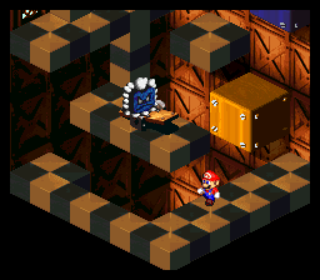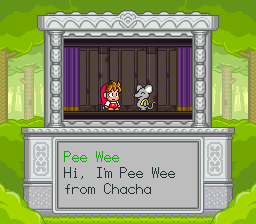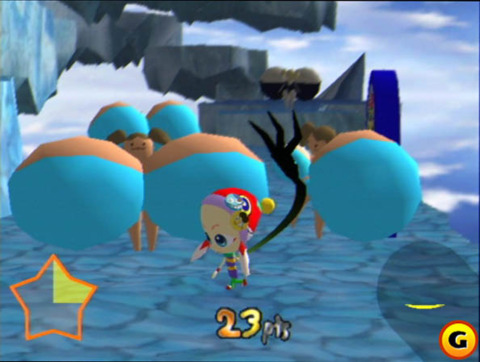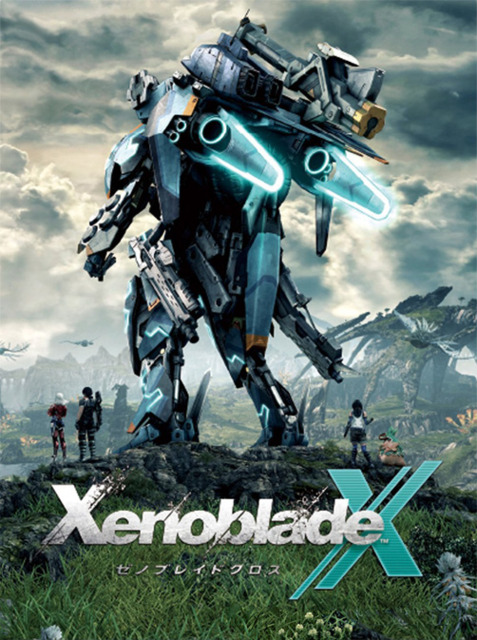All-New Saturday Summaries 2017-02-04
By Mento 1 Comments
I stopped recounting my weekly wiki input habits because it was getting tough to make that material interesting for readers. There are a lot of great, and occasionally bizarre, obscure games that pop up when processing all that data for the purpose of making our wiki suitably comprehensive and descriptive, but without anything more thorough than a bulletpoint list week after week it wasn't easy to relay how fascinating those games really are. Ideally, video footage with commentary would be the best medium to present all those games, if only because seeing is believing for a number of them. That's more or less the reason I decided to cut it out of these weekly summary blogs, but I still intend to publish the occasional round-up listicle whenever I complete a wiki project. Speaking of which, I have recently hit a milestone with my continuation of the Super Nintendo Entertainment System yearly projects - the wiki now has a full page for every game released in the first quarter of 1996. That gives me enough of an excuse to wax lyrical about the seventh year of Nintendo's beloved 16-bit system.

1995 presented a turn for the Super Nintendo, in that it was the first year where the total number of releases was fewer than that of the previous year's. However, it wasn't until 1996 that the depreciation of the SNES as a contemporary platform became apparent. 1995 saw approximately 412 new releases from all regions, not including regional localizations or rereleases, whereas 1996 only saw a relatively modest 182. That's less than half of the previous year's full quota of releases. Within 1996 itself, March was an aberration with its 32 distinct releases; every other month would have half of that number or fewer, including the usually hectic holiday release schedules of November and December. Probably goes without saying that the Sony PlayStation had eaten Nintendo's lunch at this point, with some lesser but still stiff competition from Sega's new Saturn machine. An additional challenger in 1996, however, came in the form of the Super Nintendo's younger sister: the Nintendo 64, which debuted in June of that year in Japan and in September over in the United States. This meant that even the majority of Nintendo's first- and second-party studios, as well as their more loyal third-party developers, had left the SNES behind to work on games for the new generation of hardware.

It wasn't all doom and gloom for the SNES (the SNES version of Doom had already come out the previous year, for one) because although 1996 saw a much smaller number of releases it also saw some of the Super Nintendo's most popular and memorable games come out in that time. Some of which, it can be assumed, had been in development for quite a while. While I intend to construct another "top [blank] interesting games" list once I've eventually completed every wiki page for the 1996 release schedule, there's a few obvious names I don't mind tossing out: The excellent Super Mario RPG: Legend of the Seven Stars, a joint venture between Nintendo and Squaresoft which would be the foundation for Mario's later RPG adventures and their off-kilter, franchise-irreverent senses of humor; Squaresoft's similarly ambitious Bahamut Lagoon and Rudra no Hihou (a.k.a. Treasures of the Rudra), a strategy RPG with dragons and a scenario-based RPG where the player could input words and turn them into spells, respectively; the superlative Kirby Super Star, featuring seven distinct, game-sized scenarios and two mini-games starring HAL's pink cosmic horror; Fire Emblem: Seisen no Keifu (a.k.a. Fire Emblem: Genealogy of the Holy War), considered the best of the early Fire Emblem games; tri-Ace's first entry in their still-active Star Ocean series; and Ultimate Mortal Kombat 3, one of the best fighter games of that generation and the highlight of Midway/Netherrealm's gory series for more than a decade. There's an exceptional amount of weird stuff too, and I hope to get into more detail on those once this wiki project is complete.
For now, I'll leave you all with a summary of this week's blog content elsewhere on Giant Bomb, and my final (for real this time) segment on Xenoblade Chronicles X. I finally have my life back, y'all.

- The Top Shelf saw a gaggle of PS2 cult favorites this week, and some hard decisions about what to cull from the herd. While Mr. Moskeeto, City Crisis and Freak Out didn't make the cut, I think all three have something substantial to offer fans of the off-beat and unconventional. In a sense, it's games like the above that can really make a system memorable, or at least help define its personality. I know I don't think of the Dreamcast without recalling personality-heavy games like Space Channel 5 or Jet Grind Radio, nor do I reflect on the Wii without considering its weird and wonderful experiments like Zack & Wiki, Elebits, Deadly Creatures, Disaster: Day of Crisis or Little King's Story. The Zeldas and Marios are always fantastic, but they're also always present, and so it falls to the Wii's many "one and done" curiosities to help that system stand out in my memory banks. Anyway, it all made for a fun installment to delineate this week.
- The Indie Game of the Week was the aquatic adventure game Abzu. I wish I could've written more about it, but Abzu was as transparent as its crystal blue waters when it came down to its design intent. Ironically for a game that sees you exploring the dark depths, it was fairly shallow about appropriating a lot of what made Journey a transformative trek and transplanted it into the ocean, adding some of the ethereal weirdness and clever behavioral AI gimmickry of flOw for extra flavor. What's important is that I didn't dislike the game; I think there's a lot of room for mechanically simple games that emphasize art direction and its emotional core, especially as the game industry continues to court those without much experience with high scores and button combos and little inclination to understand how they (and more commonly, the complicated controllers that are involved) work. The industry is so huge right now that there's ample room for games of every stripe and color, for every possible audience. We are living in the best time to be playing games, after all.
Xenoblade Chronicles X

My current progress with Xenoblade Chronicles X is... I've completed it. Sorta. I've completed the story and most of its missions, though I'm still far from that elusive and desirable 100% completion rating. The game's progress tracker is tied to its "FrontierNav" system - a major component of the game's forward impetus, and a common pre-requisite for many story and side-missions. The player plants data probes in various strategic areas of each of the game's five climactic-distinct land masses. These probes reveal, on a hexagonal map, the requirements for "completing" the six surrounding hexes. These requirements range from resolving missions and side-missions - the vast majority of the hexes within the hub city of New LA are completed this way - or they require that the player find a specific treasure chest or fight a specific high-level monster (the game calls these "tyrants") before the hex is marked as cleared.
Presently, I'm sweeping up the last of the missions for New LA's hexes and working on a post-game "ultimate" build to help me with some of those aforementioned tyrants. The game caps the player at level 60, about five levels higher than what is required for the final boss rush, but the enemies can go as high as level 99 and, naturally, defeating a few 90+ Tyrants is required for full map completion. This puts the average RPG player at a distinct disadvantage, as they simply cannot defeat these opponents through grinding and higher numbers alone. This is where the post-game content comes in, which will be my final topic of discussion for Xenoblade Chronicles X. Come hell or high water, I refuse to spend another week on this game when I have so many others to play. Fortunately, the means with which to polish off the 100% is within my grasp. Well, in a manner of speaking.
When tinkering with ultimate post-game builds, there are actually two paths to consider: the mecha-like Skells and "Ground Gear". Getting an overpowered Skell is both simple and extremely time-consuming. The Skell in question is the Ares 90, an absurdly high-value Skell with a few complimentary ultimate weapons. Unfortunately, in order to build this Skell, you need monster parts. A lot of monster parts. Some of which are only available from the types of gargantuan monster you'd need this Skell to defeat, in a nasty catch-22. The multiplayer component, however, allows you to earn "reward tickets" for taking part in randomized co-operative farm/bounty "squad missions" with other players online, which in turn can be spent on acquiring any monster drop in the game. These squad missions tend to be sets of five goals - kill X number of this type of enemy, collect X number of this type of material, etc. - that earn reward tickets for you whether you help reduce those numbers or not. Every player earns the full reward whenever a task is completed, so it's an entirely positive optional experience you're free to ignore. However, if you do decide to stop whatever you're doing and hammer out a dozen robots or whatever, you'll be helping a lot of other folk at the same time. It has to be one of the most positive-feeling online experiences I've seen that doesn't actually require talking to anyone - like helping an anonymous buddy in Journey (since that's been on my mind lately for some reason).
The Ares 90 can effectively stomp any enemy below its namesake level, and can stand metal-toe-to-claw against the major hitters out there. It is currently my number one target for this game, and I'm about halfway done with collecting ingredients for it. It's fortunate that half of its requisite materials can be sourced from enemies that are very killable at this level, even if it will take a while, and I can chase after those guys while waiting for more reward tokens to come my way.
Conversely, Ground Gear encompasses your equipment as an on-foot combatant. Some of the Tyrants are squirreled away in caves and cannot be approached with the Skell, and so in order to get 100% the player must be as indestructible on foot as they are in the Ares 90. This is a considerably greater challenge, in part because there are no one-stop ultimate equipment sets to work towards unlike the Skell. Rather, the player has to consider their equipment, their arts, their skills and their augments all together. The most popular one of these builds I've found is the "Blossom Dance build". The Blossom Dance ability (called "arts" in-game) requires "TP", an equivalent to Tales's "technical points" stat that slowly increases through normal attacks and can be spent to perform the more powerful arts - the idea being to create a balance of normal combos and super moves like you would in a fighter game. In order for XCX to make these TP arts more powerful, they get an additional boost from a separate statistic called "potential". This stat essentially works the same as Intelligence or Magic Attack in regular fantasy RPGs, and only adds damage to arts that require a TP cost. It also means that, were the player to go all out in building up their potential, they could make their TP-based arts hit extremely hard.
Blossom Dance was chosen for this build for two reasons: it already hits hard enough with an average amount of potential, being a late-game art that can only be earned by building affinity with a certain high-powered character recruited towards the end of the game and completing an additional quest with them, and secondly because it hits multiple times and ignores elemental resistance: two ways to get around enemies with abnormally high evasion and defense scores. Evasion won't stop every blow from landing, and cutting through resistances stops enemies from blocking all your damage because of an arbitrary immunity to specific damage types. The rest of the build's arts boost potential even higher through active buffs called auras, and likewise the passive skill boosts either increase this magic stat directly, or indirectly by increasing the length of the auras. However, it does require some incredibly strong equipment to see the kind of damage output you'll need to bring down these level 90+ titans, and that means farming high-level enemies for hours for weapon/armor drops with the right built-in augments. It's honestly a little much, and might end up being the cause of me quitting short of the 100%. However, there's something to be said for video game busywork that I can do while listening to podcasts - I'm not usually that guy, but if it's leading up to a game completion state I'm within breathing distance from, I might be persuaded to embark on some chill MonHun-style farming.
So in a nutshell: I cannot escape from this game, even after beating its story and most of its content. Its claws are buried deep within my supple flesh and refuse to release me. Please send help.
